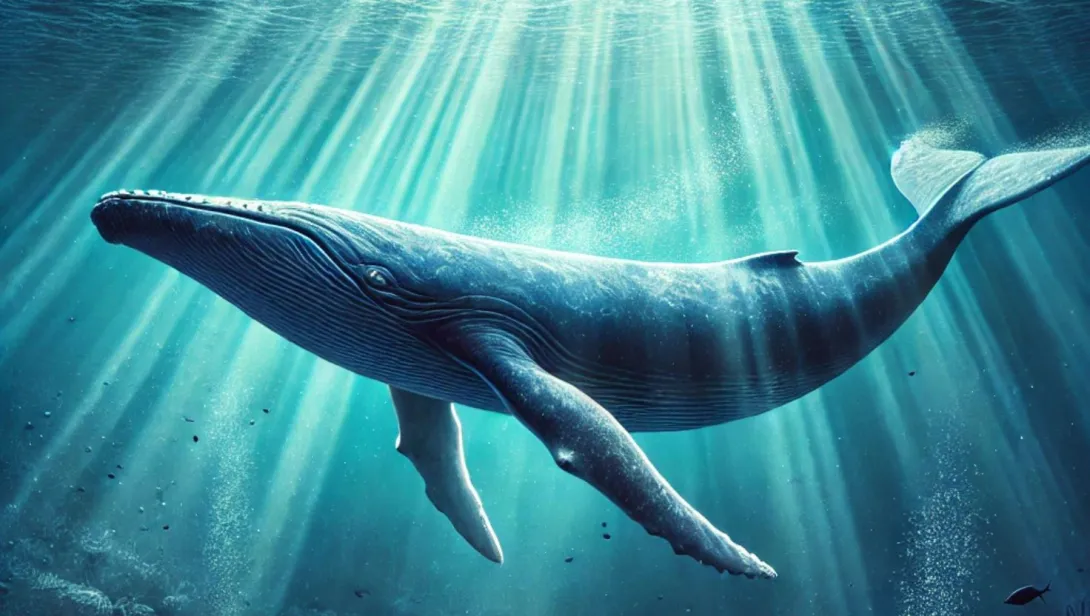Skip to main content
About Blue Whales
Introduction
- The Blue Whale (Balaenoptera musculus) is the largest animal ever known to have existed on Earth.
- They are marine mammals and belong to the baleen whale family, known for their filter-feeding mechanism.
- Blue Whales are found in oceans worldwide, from the Arctic to the Antarctic.
Physical Characteristics
- Blue Whales have a massive, streamlined body, with lengths reaching up to 100 feet (30 meters) and weights up to 200 tons (180 metric tons).
- Their skin is bluish-gray with lighter spots, and they have a small dorsal fin near their tail.
- They have baleen plates instead of teeth, which they use to filter small prey from the water.
- Blue Whales have a large heart, weighing up to 400 pounds (180 kg), and their tongue alone can weigh as much as an elephant.
Habitat and Distribution
- Blue Whales are found in oceans worldwide, from polar to tropical waters.
- They migrate seasonally, moving to polar waters in the summer for feeding and tropical waters in the winter for breeding.
- Blue Whales prefer deep, open oceans but can occasionally be seen near coastlines.
Diet and Feeding
- Blue Whales are filter feeders, primarily consuming krill (tiny shrimp-like organisms).
- They can consume up to 4 tons (3.6 metric tons) of krill per day during feeding season.
- Blue Whales use their baleen plates to filter krill from the water, taking in large mouthfuls and then pushing the water out through the baleen.
- They feed primarily in polar waters, where krill populations are abundant.
Behavior and Communication
- Blue Whales are solitary or live in small groups, though they may gather in larger numbers in feeding areas.
- They communicate through low-frequency vocalizations, including songs, moans, and pulses, which can travel hundreds of miles underwater.
- Blue Whales are known for their deep, resonant calls, which are among the loudest sounds made by any animal.
- They are slow swimmers, typically cruising at speeds of 5 mph (8 km/h) but can reach up to 20 mph (32 km/h) in short bursts.
Reproduction and Lifespan
- Female Blue Whales give birth to one calf after a gestation period of about 10 to 12 months.
- Calves are born weighing around 2.5 tons (2.3 metric tons) and are 23 feet (7 meters) long.
- Calves nurse for 6 to 8 months, consuming up to 100 gallons (380 liters) of milk daily.
- Blue Whales have a lifespan of 80 to 90 years, with some individuals living over 100 years.
Conservation Status
- Blue Whales are classified as Endangered on the IUCN Red List, with populations slowly recovering after decades of whaling.
- They are threatened by ship strikes, entanglement in fishing gear, and climate change.
- Conservation efforts include protected marine areas, ship speed restrictions, and international whaling bans.
Unique Adaptations
- Blue Whales have baleen plates that allow them to filter massive amounts of krill from the water.
- Their large size and thick blubber help them survive in cold polar waters.
- They have a highly efficient respiratory system, allowing them to hold their breath for up to 90 minutes while diving.
- Blue Whales can dive to depths of over 1,000 feet (300 meters) in search of food.
Cultural Significance
- Blue Whales are revered in many cultures as symbols of strength, majesty, and the mysteries of the ocean.
- They are featured in literature, art, and mythology, often representing the awe-inspiring power of nature.
- In modern times, Blue Whales have become icons of marine conservation and the fight against whaling.
Fun Facts
- Blue Whales are the largest animals ever to exist, even larger than the largest dinosaurs.
- Their heartbeat can be detected from over 2 miles (3.2 km) away.
- Blue Whales can produce sounds louder than a jet engine, reaching up to 188 decibels.
- They are keystone species, playing a crucial role in maintaining the health of marine ecosystems by regulating krill populations.
- Blue Whales have no natural predators due to their massive size, though calves may be targeted by orcas.
- They are migratory animals, traveling thousands of miles between feeding and breeding grounds annually.
Threats to Blue Whales
- Ship strikes are a leading cause of injury and death for Blue Whales, especially in busy shipping lanes.
- Entanglement in fishing gear can lead to injury, starvation, or drowning.
- Climate change affects krill populations, which are the primary food source for Blue Whales.
- Ocean noise pollution from ships and industrial activities can disrupt their communication and navigation.
Conservation Efforts
- Marine protected areas have been established to safeguard Blue Whale habitats and reduce human impact.
- Ship speed restrictions in key areas help reduce the risk of ship strikes.
- International bans on commercial whaling have allowed Blue Whale populations to slowly recover.
- Public awareness campaigns educate people about the importance of Blue Whale conservation.
